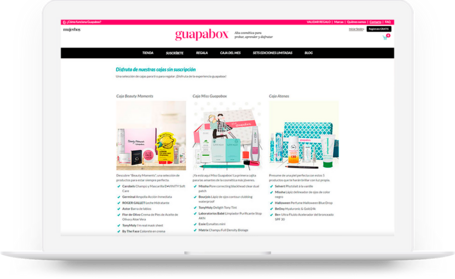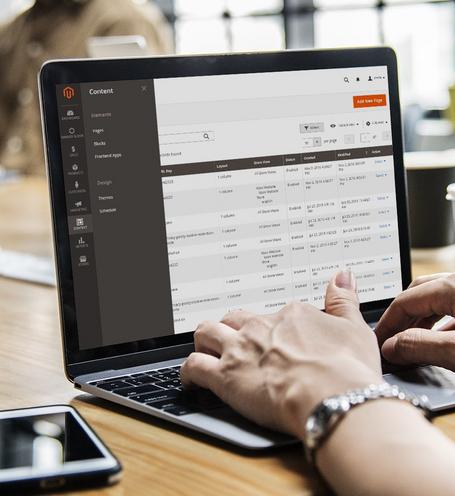We gave the guapabox.com portal a face lift.
Taking advantage of the ‘beauty-box’ craze, which were all the rage in countries such as the US and Japan, in 2013 the Vocento Group launched the Guapabox line: small boxes of cosmetics that consumers get sent to their homes on a subscription basis in order to try the products.
The Vocento Group entrusted Paradigma with solving all administrative problems, capitalizing on mobile traffic, and giving its e-commerce portal guapabox.com a modern look.
In order to meet the big demand for this product and knowing that most of the conversion rate came from a specific channel, the people at guapabox.com trusted in us to improve the optimization of the traffic coming from mobile phones.
Other needs Vocento told us it had were maximizing its ROI and improving the processes for posting and generating content from the back office.

Background.
After guapabox.com was launched, the company discovered, by analyzing the consumption habits of the site’s visitors, that the highest percentage of traffic was from mobile devices but, also, that the associated conversion rate was lower than that of other channels.
In addition, the portal managers were running into difficulties during the day-to-day administration of the site, had to deal with tedious publication processes, and had to utilize several tools.
For all these reasons, they decided to undertake a project that could make money from all the traffic coming from mobile phones, give the portal a more current look and simplify administrative operations.
We reduced the page load time by 40%
40
Improving to make a profit

Solutions
The project was born with a very specific date in mind, which was set by a major advertising campaign. In order to be able to achieve this goal, we decided to work with Kanban.
Guapabox had a content management system (CMS) integrated into WordPress, which worked with Magento when in came to posting both news on the portal and publishing the pages, the sections and also the information about the products on the online store. This made things difficult for the portal administrators, who had to work with two isolated – but connected – platforms on a daily basis.



A custom-made CMS.
One of the main improvements we made was to move the portal’s content management from WordPress to Magento (product pages, new promotional sections, brand lists...).
In order to achieve this, we took one of the most popular and versatile modules within the Magento ecosystem – Content Manager – as the basis and we adapted and built it according to the needs of our CMS.
Upon completion of the project, WordPress ceased to be the tool for posting content on the blog, and Magento became the tool for doing everything.

What did we achieve?
Thanks to our work model and to applying continuous integration techniques, branch management in Git, a fluid communication with other departments, and a number of additional measures we took, we delivered the product ahead of schedule. This allowed us to make headway on some functionalities that had not been expected to be ready by the launch date, adapt other functionalities, and even start working on new features that had not even been contemplated at the outset of the project.
Our team was the key to the success of the project; it assumed the responsibility and owned it. The team’s members managed, even at times of great stress, to get the job done with a smile on their faces. In turn, Vocento did everything that was in its power to make things easy for the team.

